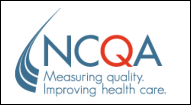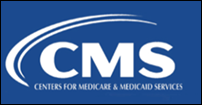EPtalk by Dr. Jayne 4/27/17
![]()
I attended the Physician Compare Benchmark and 5-Star Rating webinar this week. The team shared information about their new ABC Benchmark methodology and asked for physician feedback on the proposed approach.
Frankly, after attending the webinar, I’m disheartened. What they are proposing is complex and there is debate about whether a cluster method or equal-ranges method should be used to assign the ratings. There is also debate on what to do when providers are so high performing they can’t determine how to allocate fewer than five stars. For those measures, they’re discussing only displaying those providers who had five stars vs. not displaying those measures at all. It seems counterintuitive to not report something that people are good at. Not to mention, if it’s this complicated, it’s going to be less meaningful for patients.
At the beginning of the webinar, the speaker specifically stated that sometimes when they use a five-point scale, that people see it like school grades: A, B, C, D, F. But that’s not what they’re trying to do here, etc. I challenge the people involved in this to understand that most of the public is still going to see this like school grades. Regardless of footnotes or explanations on the website, people see three stars and think you’re a C performer.
These ratings become even more complex for measures where everyone is doing well. So how about this proposal: set benchmarks related to a grade scale and let patients truly compare not only from physician to physician, but across measures. Say we want 100 percent of diabetic patients to have a foot exam. Ninety percent is five stars, 80 percent is four, 70 percent is three, etc. Or heck, just use letter grades to make it easier. Maybe your physician gets As and Bs on everything relevant to your needs and you’re good to go. Maybe they get Bs and Cs and you need to look for someone else. Maybe all physicians get a C on some measures, which helps you understand that it’s difficult to achieve. It certainly would save the millions of dollars they’re spending to put this together and would create a system that fits into an already accepted cultural schema rather than creating something new that takes a statistician to explain.
The slides are available here if you want to check them out yourself, and if you want to share feedback, it can be sent to PhysicianCompare@westat.com with a subject line of “5-Star Rating Feedback” prior to May 10.

NCQA announced a new Oncology Medical Home recognition program, following the Patient-Centered Medical Home and Patient-Centered Specialty Practice models already available. They’ll host a webinar on May 5 to discuss the new program and how to achieve recognition. I’ve assisted several organizations through the NCQA recognition process and it’s not for the faint of heart (or the light of pocketbook).
Regenstrief Institute, along with the American Medical Association, has launched a mock EHR tool for use by medical students. It contains simulated patient data and allows students to practice documentation along with processing information in a typical EHR format. These kinds of tools are increasingly needed as hospitals institute fragmented policies around whether students are allowed to document in the EHR, and if they are, what kind of user rights and training they receive. My hospital allowed students to use the EHR, but didn’t give them full rights for ordering, writing scripts, or many of the other functions they had in the paper world.
The Regenstrief EHR Clinical Learning Platform tool was co-developed with Indiana University School of Medicine and is also in use at the University of Connecticut School of Medicine and the University of Southern Indiana College of Nursing and Health Professions. AMA will assist in its distribution.
Given the expansion of patient-generated health data through home monitors, fitness trackers, and more, ONC has created a challenge to find solutions to the problem of capturing data provenance. I know many physicians who are reluctant to allow patient-generated data into the EHR due to concerns about reliability as well as quantity. Anyone who has been faced with home blood pressure logs documenting five or six readings a day for three months knows what a burden this data can be. ONC recognizes that reliability and trustworthiness of data are issues.
The $180,000 challenge is in two phases, the first involving submission of white papers describing current methods with the second phase requiring winners to develop and test their solutions. Information about the challenge can be found here and phase 1 submissions are due May 22.
I’m enjoying reading Mr. H’s coverage of Missouri’s ongoing failed attempts to create a Prescription Drug Monitoring Program. Hopefully they’ll eventually arrive at a workable solution. Opioid addiction continues to be a national issue and CDC recently launched an online training series around opioid prescribing. The first of eight modules is now available. Future modules include patient communication, non-opioid pain management options, dosing/titration, and risk reduction. I’m still slogging through a bunch of online CME, so let me know if you’ve test driven the module and what you thought.

I subscribe to dozens of communications from various governmental organizations in an attempt to keep up with all the warnings, alerts, proposed rules, and dictates that impact physician practices. Every once in a while I see an email subject line that truly catches my attention, as did this one about “Mixing Kentucky Spirits with Food Safety.” We think about the FDA as regulating medications and foods, but it also has jurisdiction over veterinary issues. Grain byproducts of brewing and distilling are often used as livestock feed. The 20-member FDA team found their visits to various production facilities (including Woodford Reserve, Wild Turkey, and Jim Beam) to be “extremely productive” with there being “no substitute for actually seeing how these beverages are produced.” I can say that I felt the same after a recent pilgrimage to the distillery responsible for my favorite adult beverage. However, I wonder if the FDA tour ended with a complimentary drink and a souvenir glass, as mine did? I also wonder if the FDA sends as large of a contingent to less-exciting venues such as sunscreen manufacturers.

Email Dr. Jayne.














"A valid concern..." Oh please. Everyone picks the software they like and the origin of that software is an afterthought.…